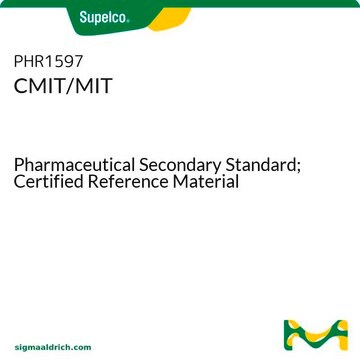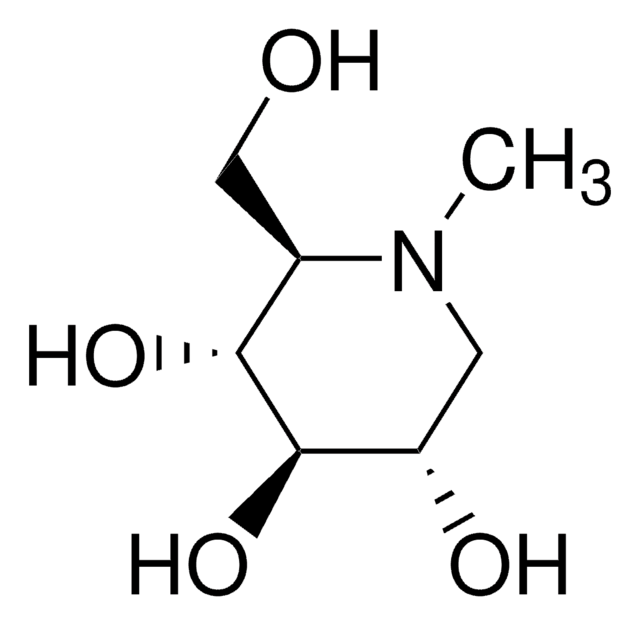M6045
2-Methyl-4-isothiazolin-3-one hydrochloride
≥99%
Sinónimos:
MIT, Methylisothiazolinone hydrochloride
About This Item
Productos recomendados
assay
≥99%
mode of action
protein synthesis | interferes
storage temp.
2-8°C
SMILES string
Cl[H].CN1SC=CC1=O
InChI
1S/C4H5NOS.ClH/c1-5-4(6)2-3-7-5;/h2-3H,1H3;1H
InChI key
SJXPQSRCFCPWQQ-UHFFFAOYSA-N
¿Está buscando productos similares? Visita Guía de comparación de productos
General description
Application
- as a cytotoxic substance to investigate its effect on bronchial epithelial cells (BEAS-2B cells) and its role in apoptotic cell death
- to study the effects of tyrosine phosphorylation on focal adhesion kinase (FAK) activity in the development of neural axons and dendrites
Biochem/physiol Actions
signalword
Danger
hcodes
Hazard Classifications
Acute Tox. 3 Oral - Aquatic Acute 1 - Aquatic Chronic 1 - Eye Dam. 1 - Skin Corr. 1A - Skin Sens. 1
supp_hazards
Storage Class
6.1A - Combustible acute toxic Cat. 1 and 2 / very toxic hazardous materials
wgk_germany
WGK 3
flash_point_f
Not applicable
flash_point_c
Not applicable
ppe
Eyeshields, Faceshields, Gloves, type P3 (EN 143) respirator cartridges
Certificados de análisis (COA)
Busque Certificados de análisis (COA) introduciendo el número de lote del producto. Los números de lote se encuentran en la etiqueta del producto después de las palabras «Lot» o «Batch»
¿Ya tiene este producto?
Encuentre la documentación para los productos que ha comprado recientemente en la Biblioteca de documentos.
Los clientes también vieron
Nuestro equipo de científicos tiene experiencia en todas las áreas de investigación: Ciencias de la vida, Ciencia de los materiales, Síntesis química, Cromatografía, Analítica y muchas otras.
Póngase en contacto con el Servicio técnico













